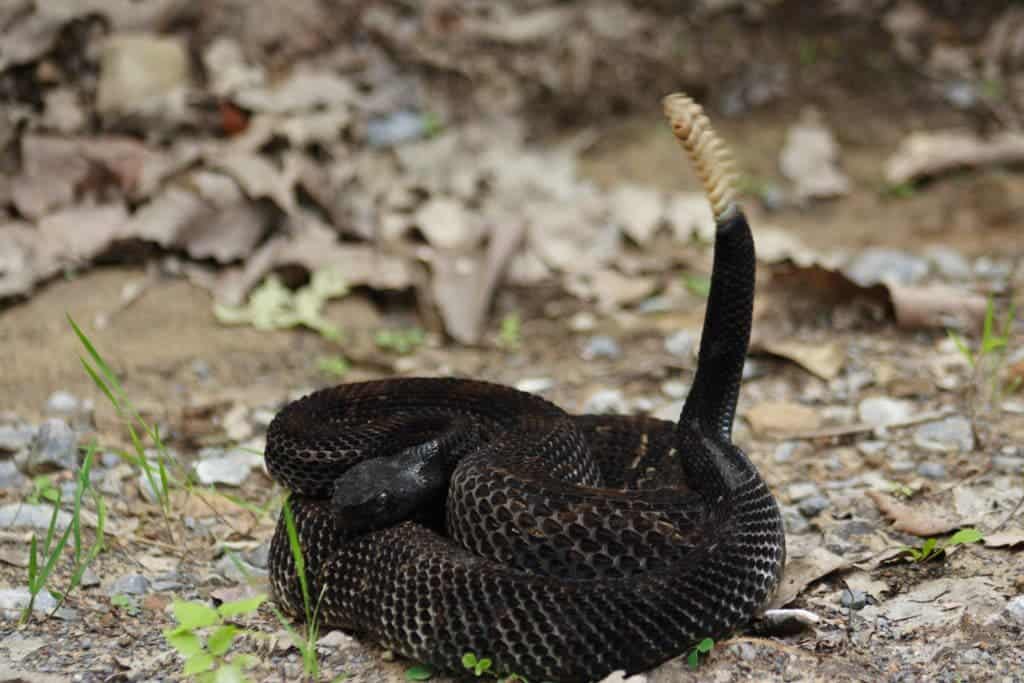During a routine survey in a patch of forest in central Barbados, researchers lifted a rock and found something unexpected in the soil: a tiny, thread-thin snake, shorter than a finger and no thicker than a noodle.
It was Tetracheilostoma carlae, the Barbados threadsnake. It’s the smallest known snake in the world. The species had not been documented since 2005 and was considered “lost to science,” a term used for species that haven’t been observed in at least a decade.
The discovery, made in March by scientists from the Barbados Ministry of the Environment and the nonprofit Re:wild, confirmed that the elusive animal still survives in the wild, despite decades of habitat loss and competition from invasive species.
Researchers had been actively searching for the snake as part of a wider effort to find and monitor rare reptiles native to the island. Their success marks a rare bright spot for conservation in a place where many native animals have already gone extinct.

A Noodle in a Termite’s Nest
“[This was] probably one of the highlights of my career so far,” Connor Blades, a project officer with the Barbados Ministry of the Environment and National Beautification, told As It Hapens.
The snake’s rediscovery was a moment of hope on an island where many native species have vanished. Since the 16th century, Barbados has lost 98% of its native forest. Entire species — the Barbados racer, the Barbados skink, the rice rat — have gone extinct. Conservationists feared the threadsnake was one of them.
The nonprofit Re:wild included the Barbados threadsnake among 4,800 “lost to science” species after its last confirmed sighting in 2005. Before that, its sightings were rare and decades apart. That’s not surprising, considering its size. Adults reach just 7.5 to 10 centimeters (about 3 to 4 inches) in length and are barely as thick as a cooked noodle.
They’re also cryptic — literally. As blind snakes, they spend most of their lives underground or hidden in termite nests, where they feast on termites and their eggs. Their strategy for survival is unexpectedly clever: they secrete chemicals that prevent termites from attacking them.
“They live in termite’s nests and release secretions that basically trick termites into not attacking them,” Justin Springer, Caribbean program officer for Re:wild, told IFLScience. “That’s pretty cool.”
Endangered in Every Sense
After the March discovery, the team placed the snake in a container filled with leaf litter and soil, then brought it to the University of the West Indies for a closer look. Identifying it wasn’t easy. It closely resembles the Brahminy blind snake (Indotyphlops braminus), a recent and invasive arrival in Barbados. Only by analyzing scale patterns under a microscope — and even then, from a still image taken from a wriggling video — did Blades confirm it.
“I began to look over the snake and it was clear to me that I really needed to take it to a microscope to get a proper look at it,” he told Mongabay.
Researchers found a second Barbados threadsnake a month later, strengthening hope that a population still survives in the island’s remaining forest patches.
But survival is no guarantee. The species faces critical endangerment and reproduces by laying only a single large egg at a time. Unlike some reptiles, they cannot clone themselves through parthenogenesis. Finding a mate in fragmented habitats may be difficult, especially when there are so few mates to find.
“If the threadsnake population isn’t very dense, I’m worried about their ability to find mates, particularly if their habitat is under threat and being degraded,” Blades added.
That habitat is dwindling fast. Most of the remaining forest lies in the Scotland District, a rugged region in northeastern Barbados with gullies, steep slopes, and limestone outcrops. The area now serves as a last refuge for the island’s endemic life, and possibly its ecological future.

A Tiny Creature With a Long History
The Barbados threadsnake is rather ancient. It belongs to a lineage called Scolecophidia — primitive, burrowing snakes whose ancestry may trace back to the Jurassic, when the continents of the world were still joined as the supercontinent Gondwana. The ancestors of today’s threadsnakes likely dispersed on drifting landmasses or even by rafting.
Now that scientists know the species still exists, they plan to continue their surveys to determine its full range and better understand its needs. That knowledge will be key to protecting what remains of its fragile habitat.
But it’s not just about one tiny snake.
“The threadsnake’s rediscovery is also a call to all of us as Barbadians that forests in Barbados are very special and need protection,” said Springer. “Not just for the threadsnake, but for other species as well. For plants, animals and our heritage.”
In a world where wildlife is vanishing faster than it can be cataloged, the reappearance of Tetracheilostoma carlae is a rare moment of optimism. It’s a reminder that even in the smallest corners of nature, life still finds a way.






